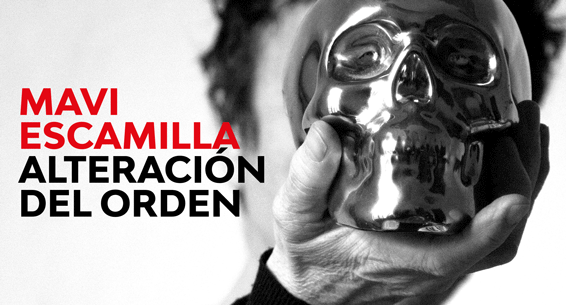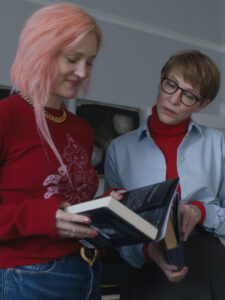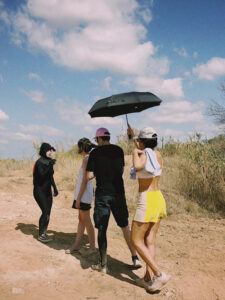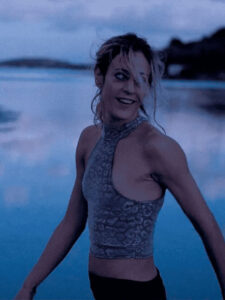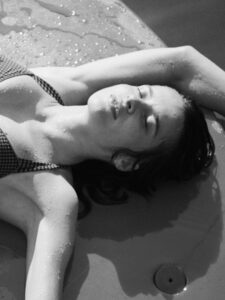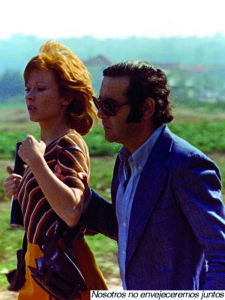Two formally unique proposals focused the sessions of the third day of screenings of the Official Section of La Mostra. Moondove share Lebanon's Karim Kassem, places us in some unknown town in contemporary rural Lebanon. There we will meet Ghassan, an employee of the local water company. Ghassan's workday starts very early. With his beat up car, He walks the streets of the town answering the calls of his neighbors, first victims of a severe drought that plagues the region. Together with Ghassan we will meet a pigeon breeder who dreams of leaving the town in search of a better life., to a car mechanic, to a goat herder, to a retired couple or the lazy, drunk gas station attendant, among other characters. All together they make up a curious collage that aspires to become a portrait of a society in decay..
It is this portrait aspiration that seems to have inspired Karim Kassem to adopt the form for this his fourth full-length work that arrived at La Mostra in an exclusive world premiere.. Although the conception of the scenes is intended as a fictional artifact, Kassem uses shot planning and staging that brings it closer to a typical documentary., with simple shots, using ambient lighting and mainly descriptive fractionation, seeking to gain distance and objectivity from its subjects. All of this imbues the film with a deliberate naturalism and verism to which the director aspired., and that was reinforced, according to what was said in the presentation of the film, due to the presence of non-professional actors chosen from among the inhabitants of the town where the film would be shot.
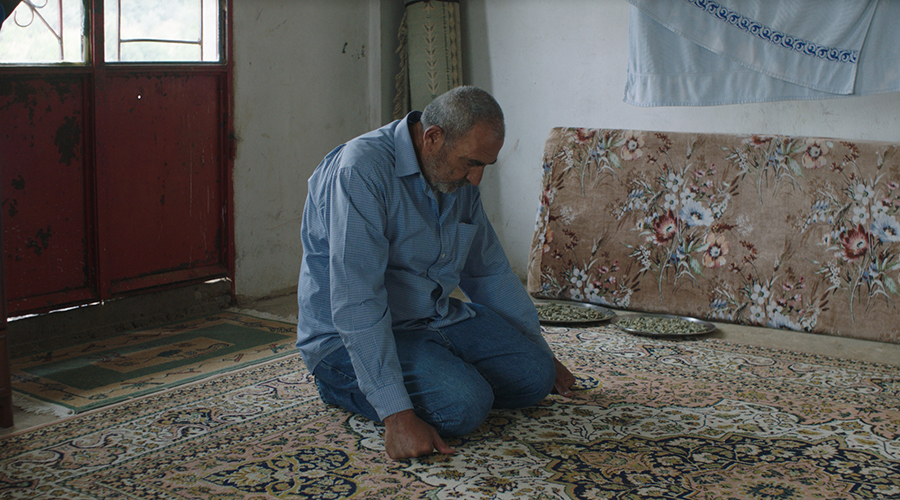
That naturalistic effect is broken, however, by the use of certain fictional resources that serve the director to leave clues about what he wants to tell, while adding seasonings to a certain poetic dimension, discursive and clearly existentialist, self-conscious, that you want to print to your work. One of these elements is the voice-over with which the director puts us into the heads of some of his characters.. Accessing your thoughts, We enter a world of contrasts between inside and outside that would not have been possible if we only attended to the events and conversations typical of the conventional format of so-called non-fiction.. The other resource is a use of sound that provides another expressive level to the images.. In one of the scenes of the movie, a woman looks at the camera. In the background we hear the noise of spinning machines. The rhythmic sound of the machine acquires a very precise rhythm that is imposed as a metaphor for that time asleep., repetitive in which the characters live.
And if there is something that Karim Kassem's film talks about, it is precisely that, of the passage of time. Stopped time of a stagnant community at all levels, social, economic, demographic, technological, a world apart from the world, we could say, sensation that permeates each frame of this film composed of long takes, in which we see precisely that happen, the time. The pigeon breeder's father visits the town mechanic. Actually, he doesn't want anything specific. He has simply left his house to break the monotony and boredom., looking for someone to have a conversation with. In any corner of the house, the light enters through the window and draws a frame on the floor. stagnant time, cornered, that takes over the rooms of the home, humble, time that eats the town and those who live in it. That's all.

And the landscape as a metaphor for this society immersed in the torpor of overwhelming heat and the dust that covers everything.. At the bottom, the mountains appear as impassive witnesses of the life of these souls, oblivious to their problems and, somehow, responsible. As Karim Kassem said, It is not the same to open a tap and have water come out., as happens in any western city, than to suffer the hardship of scarcity. Water, its absence in this case, catalyzes an entire process of social mutation. It is not surprising that the film ends precisely with the image of a stream flowing through the trees. The river as a metaphor for the unstoppable flow of lives, beginning and return, symbol of that which changes, without changing at the same time.
Again, The lack of a conventional plot is not an impediment to telling a story. or several. Kassem takes Ghassan as a cicerone or privileged guide to bring us closer to those other lives that will take shape throughout the narrative.. Stories, extracts from lives that, separately, maybe they don't mean anything, but what, all together, they draw the map of this small microcosm in which they want to immerse us. It will therefore be the sum that gives coherence and meaning to this proposal, sewn by choosing certain motifs or small conflicts that will be returned to throughout the film, overlapping each other, and on whose resolution the impression of continuity will depend.

“I'm not going to leave”, Ghassan says and repeats to himself. Where do you not want to leave?? Leave your town, get away from people in whose lives it has become an essential piece for survival. Without your help, the little water that flows through the pipes would not reach homes. That is your pride and your condemnation. Departures o Departures It is also the title of the play that a group of amateurs performs each season in the town's theater.. After selling his pigeons, the caretaker has collected enough money to finally leave his house. With it, He also leaves his sister and father, whom I may never see again. Go out and don't look back. Depart also through death. There are many issues that Kassem addresses in Moondove. immigration, poverty, the presence of war, not through bombs, but of its consequences, as the director wanted to record, but, above all, Moondove It's a tribute to an old idea, in decline, perhaps soon extinct forever from what we understand as a community.
Change of schedule and also change of register and tone with the projection of Fotogenico by directors Marcia Romano and Benoît Sabatier, film that arrived at this edition of La Mostra after passing through the Acid section of the Cannes Festival dedicated to the most independent cinema. Photogonogenic recounts Raoul's journey, a middle aged man, drink enthusiast, who arrives in the city of Marseille trying to discover the reasons for the death of his daughter Agnes. As the only indication, Raoul has the address of a law firm for which he was supposedly working. But when he arrives at the place, Raoul discovers that the firm does not exist. It will be the first clue that will take him through an underworld of the Marseille counterculture in which Agnes was involved.. A world of ramshackle hovels, electronic music and, above all, many drugs. But what surprises Raoul the most is that his daughter had started a rock group.
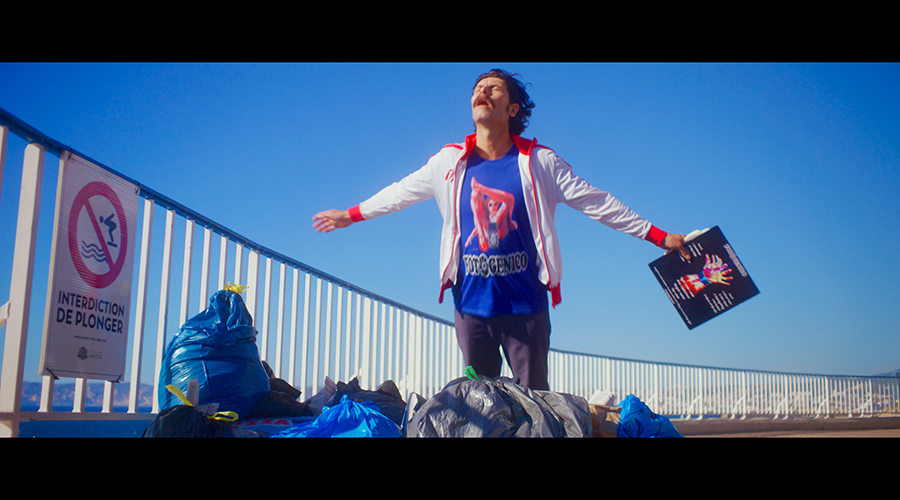
After viewing Photogenics, It is not surprising that Marcia Romano and Benoît Sabatier defined their proposal as a tragicomedy, although perhaps it would be more correct to speak of a tragic comedy, according to the dramatic development of the story. Photogenics begin, Yeah, like a farce that, in the words of the authors themselves, It refers us to the cinema of Dinno Risi and the Italian comedy of the 60. And there is something of that in the character of Raoul and that apparent and jovial anarchy that seems to direct that crazy going from here to there without knowing very well where his steps will take him.. But as Raoul goes, in an uneven way, investigating his daughter's past and becoming intimate with that gallery of characters that he will meet along the way, things turn, without losing a certain burlesque tone, more serious.
As it happened in Moondover, Here it will be the itinerary that Raoul follows that will serve as an excuse to take a cultural tour, sentimental and emotional for this dilapidated Marseille that its authors want us to enter and in which, they said in the presentation, They have been living for more than 25 years. A Marseille that takes aesthetic and political distance from the Marseille that has come to us in recent decades through the cinema of Robert Guédiguian. Just look at his latest work, Let the party continue, to realize that, being the same place, we are facing very different worlds.

Compared to the more formally classical approach to Guédiguian's work, Marcia Romano and Benoît Sabatier wanted to give their proposal an appearance that is in tune with that countercultural world that they wanted to describe.. Guédiguian's sobriety disappears to give free rein to a hodgepodge of resources such as the use of zoom, the syncopated montage of the video clip, deliberately used in an apparently capricious way, and more broken lighting, less cared, of the scenes in an attempt, the directors said in the presentation, to emulate the covers of the vinyl records that they refer to within that underground culture that they try to portray. A style exercise that seeks to provoke the viewer, take it out of your own comfort, to break your expectations.
Two Marseilles then, two neighboring worlds that share, however, some main axes such as social and political abandonment (it is not free, at a given moment on the tape, the reference to President Emmanuel Macron), the degradation of spaces, the lack of expectations, and although in Guédiguian's cinema all this has a tone of denunciation, Here, above all, a sense of celebration of that marginality prevails as an expression of a conscious and collective identity., even if it is a community, in this case, marginal.
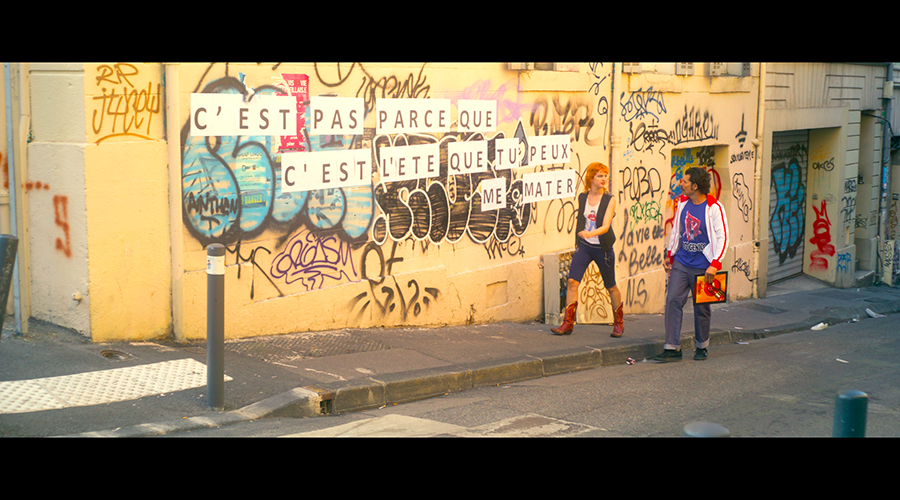
An exercise with a clear pop style that, as the authors expressed in their presentation, will try to unite with a dotted line the generation of the 80, to which they belong, with the current generations who have found in other ways (the queer and feminist demand), the new ways to confront the system. Aesthetics so embedded in each other that it is not surprising that, after the screening, some spectator would think that we were facing a recreation of that past (forgetting that, even if intentionally? very discreet, mobile phones appear on the screen).
But this external appearance, this counter-normative exercise (up to a point), It would remain a mere festival curiosity if it did not delve into other aspects with which the viewer can connect.. We said that Photogenics It is a film that moves between comedy and a certain drama. It is in this second aspect where we find the ultimate meaning of Romano and Sabatier's proposal.. And it is that, how we will discover, Raoul may have lost a daughter, but, on the way, will find others who, although they cannot replace it, if they will help you create new emotional spaces. Raoul finds himself lost in a world he doesn't know and that, clearly, suspicious of him. After demonstrating his intentions, will be well received. A new family emerges, So, in the end. And this is when Romano and Sabatier's film becomes more interesting. Raoul arrives in a world that rejects him as a stranger, an outside agent, an anomaly. It will be later, when their true intentions are understood when the walls of incomprehension that separate both sides fall. There is not much difference between the marginality of these characters that he will meet and that which he himself suffers.. A call to overcome our prejudices, in one sense or another. GERARDO LEON



